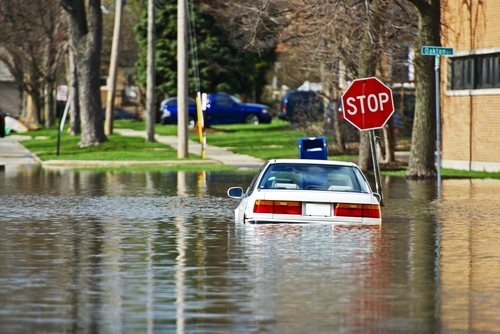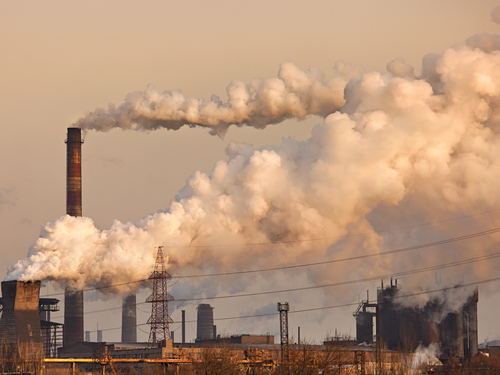
The Rising Cost of Hurricanes
The hurricane season of 2017 has been a severely damaging one. Hurricane Harvey devastated parts of Texas, Maria savaged Puerto Rico, and Hurricane Irma dealt a punishing blow to an already-reeling Florida (not to mention Nate and Jose). As I write this, Hurricane Ophelia – the tenth named storm in a season that was predicted to be “less active than usual” – is brewing in the eastern Atlantic. Whatever the cause of this increase in hurricane frequency, though climate change is a likely culprit, no one can deny that these storms are growing more costly
The World Health Organization estimates that the global cost of hurricane damage per season is rising by 6% a year. (That’s in real dollars, not nominal, by the way, so inflation doesn’t factor into it.) If storms are increasing in strength and frequency, why is more not being to mitigate the costs?
Two words: incentives and avoidance.
Economists believe that people respond to incentives. Make an activity less expensive, and more people will engage in it. Make an activity more expensive, and the level of activity will drop off. Why is that important here?
It turns out that if policy makers make it relatively inexpensive to build your house in a floodzone, lo and behold, more people are going to build their houses in floodzones. Houses that are built in floodzones are, no big surprise, more prone to flooding. According to the Economist magazine’s recent article, Harris County, Houston’s home, has allowed 8,600 homes to go up in the 100-year floodplain. (The 100 year floodplain is not, despite its name, an area where a flood is expected to occur every 100 years. A 100 year floodplain is an area that has a 1 percent chance of being flooded in any given year. That means, over the life of a 30-year mortgage, the change of a such a flood occurring is just about 26 percent.) The more houses located in a floodplain, the greater the expected cost of such a flood. Simple math.
Not only that, but by developing in the floodplain, much of that land was converted from prairie land to impermeable surfaces, like roads, driveways, and sidewalks. Coastal prairie land can absorb large amounts of rainfall. Concrete and asphalt cannot, leading to more flooding and more runoff, and more erosion of existing soil, as the velocity of the water is increased by those impermeable surfaces. The act of putting more development in vulnerable areas is a double whammy – you’re putting more homes in harm’s way, and you’re taking away the natural infrastructure that helps protect against flooding in the first place.
I also mentioned “avoidance” as one of the reasons why hurricane costs have been increasing. It’s no surprise that most people tend to avoid thinking about negative information, and that applies to getting insurance. According to the Insurance Information Institute, only 12 percent of American homeowners had flood insurance in 2016. While most banks and mortgage companies require flood insurance if your home is in a high-risk area, federal law does not require coverage in a moderate to low risk area and almost 25% of all flood-related claims come from those areas. Why is that? Maybe they see it as too expensive, or they’re putting it off. Maybe they’ve simply made a bad bet. Or perhaps they expect the federal government to foot the bill. Even if the government does cover some of the damage (and the federal government did cover about 80% of Hurricane Katrina’s damages), that still means that taxpayers may be subsidizing an increasingly risky bet.
And those bets are becoming riskier. What was once considered a 100-year storm – that is, where the probability of one occurring is one percent annually – is now occurring more frequently. Scientists estimate the likelihood of a storm of a certain size occurring based on historical figures – and we know that more intense storms are happening more often. (For a great discussion of how the US Geological Survey draws the “flood maps,” see this piece from Five Thirty Eight.)
It’s not only the insurance companies, the homeowners, or the federal government who shoulders the increasing costs of hurricanes and other natural disasters. Municipalities can see a blow to their tax base, a rise in the cost of borrowing, and even the possibility of litigation if it’s found that the municipality issued building permits or approving subdivisions that increase the potential of flooding.
What can be done to stop these costs from continuing to increase? Well, for a starter, communities need to take a good long look at their land use regulations. We need to stop subsidizing bad risks. It should be more, not less, costly to build in flood plains. We need to stop subsidizing the conversion of wetlands and other buffer zones to development. We need to preserve our natural infrastructure. And, we need to implement more resiliency efforts.
Municipalities should also make sure that businesses and homeowners fully understand the potential costs of not having flood insurance We need to make sure that the people involved in these kinds of decisions have a clear understanding of the full social and environmental costs of their actions. These moves make economic sense as well as environmental sense.
rbouvier consulting’s mission is to promote a more transparent economy by making sure that social and environmental costs are included in economic decisions. Visit our website to find out more.



